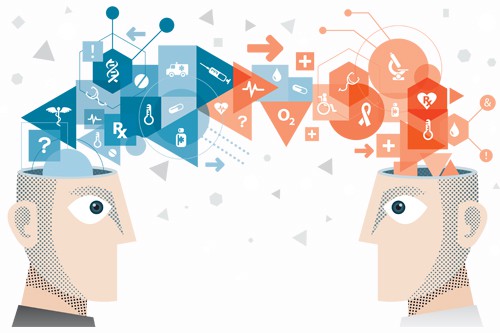
We are in the middle of a transformation in how physicians learn and keep up-to-date. In order to design useful communication tools, we need to understand how physician behaviour is changing.
Ashfield Healthcare Communications brought together ten digitally literate physicians in the Medical Education Future Forum to evaluate and anticipate current and future trends.
With time constraints and the velocity of new information, one of the biggest learning challenges for physicians is to keep up-to-date.
We still do not have a time-efficient and reliable system to keep up with latest news.
Future Forum participant
Physicians are looking for solutions that save them time; they want information that is filtered, curated, and delivered in a concise, well-designed format at the time and on the device that suits them.
One of the strategies that physicians are already adopting is the use of social media and online communities.
On Twitter you keep updated from patients and fellow professionals. I tell other Doctors to use Twitter and they always say they should have done it sooner.
Future Forum participant
When it comes to more in-depth learning, physicians will still invest time but there are expectations for an engaging experience. Our Future Forum predicts a trend towards greater collaborative learning and more immersive learning experiences.
Educational games, such as The Blood Typing Game, create an immersive environment which helps physicians understand rather than memorise.
Physician predictions: managing patient care
Point-of-care devices are increasing efficiency by removing hours waiting for laboratory results. Telemedicine (healthcare at a distance) is improving access to treatment.
Wearable technology and telecare (remote monitoring) provide data to help patients manage their own health and allow physicians closer insight, as well as opportunities to intervene.
All of these technologies will impact how physicians divide their day between different activities (e.g. reviewing data from patient sensors) and between face-to-face and remote care.
But the most far-reaching impact on the role of the physician will come from artificial intelligence. Consider a system like IBM Watson for Oncology which instantly mines a collective knowledge of clinical evidence in order to provide prescribing recommendations.
Such systems change in-the-moment decision-making and are likely to disrupt the ongoing educational and skills development required by doctors.
Physician predictions: patient interaction
We talked to Dr Partha Kar, a Diabetes Consultant in the UK, to understand how technology is helping to support better doctor-patient interactions today and what his vision is for the future.
Today
It is technology which we use regularly in everyday life that is also having the biggest impact on patient management: smartphones, text, email, social media and Skype.
These technologies are improving accessibility and responsiveness of care, and allowing physicians and patients greater flexibility.
Other tools which Dr Kar uses regularly are those which make life easier for both parties e.g.:
- VoyageMD enables patients to maintain control of their diabetes whilst travelling
- Diasend collects insulin pump and blood glucose meter data for patients to monitor and share with their physician
You have diabetes. You are the expert. I am here to help you. Technology is helping us hand care back. – Dr Kar
The future
The technology of future health management is here. Dr Kar believes it’s the ability of health systems to adopt new working policies and practices that is holding us back.
The revolution of health management is led by forward-thinking personalities and pockets of innovation; change on a broader scale is slow and cautious.
This incremental change will become everyday practice: driven by patient demand, local champions and financial pressure.
This gives us clues about pharma’s role in driving positive change:
- Invest in really understanding the needs of patients in terms of living with their condition and accessing health services
- Identify local champions to collaborate with
- Look at eco-systems of care to find unmet needs where pharma supported services can improve clinical, patient and economic outcomes.
These are exciting times for pharma companies with the leadership, foresight and agility to grasp these opportunities and help accomplish a seamless connection between doctors, patients and health services information.
• For further insight, see this infographic on the future of medical education: http://bit.ly/1QNL56g and this report on the future of patient centricity: http://bit.ly/1GJTQLO.




